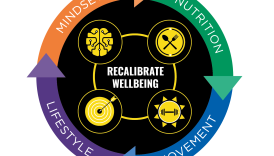Creating a Healthy Home Environment for Optimal Wellbeing

Introduction: Understanding the Importance of a Healthy Home Environment
Impact of Home Environment on Wellbeing
Creating a healthy home environment is more than just a trend; it’s a fundamental aspect of enhancing overall wellbeing. The spaces we inhabit deeply influence our physical, mental, and emotional states. For example, coming home to a cluttered living room can trigger feelings of stress and anxiety.
- Creating a Healthy Home Environment for Optimal Wellbeing
- Introduction: Understanding the Importance of a Healthy Home Environment
- Impact of Home Environment on Wellbeing
- Benefits of Creating a Healthy Home
- Decluttering and Organizing Your Living Spaces
- Tips for Decluttering Effectively
- Importance of Organization Systems
- Improving Indoor Air Quality for Better Health
- Common Sources of Indoor Air Pollution
- Ways to Enhance Air Quality at Home
- Creating a Toxin-Free Home Environment
- Identifying Harmful Chemicals in Household Products
- Choosing Non-Toxic Alternatives
- Enhancing Natural Light and Ventilation in Your Home
- Importance of Natural Light and Fresh Air
- Tips for Maximizing Light and Airflow
- Incorporating Plants for Clean Indoor Air
- Benefits of Indoor Plants for Air Quality
- Best Air-Purifying Plants for Your Home
- Creating a Relaxing Bedroom for Quality Sleep
- Importance of a Sleep-Friendly Environment
- Tips for Designing a Calming Bedroom
- Promoting a Healthy Kitchen for Nutritious Meals
- Importance of a Well-Organized Kitchen
- Tips for Improving Kitchen Layout and Functionality
- Establishing Healthy Habits and Routines at Home
- Benefits of Consistent Wellness Practices
- Tips for Creating Healthy Daily Routines
- Maintaining a Clean and Sanitary Home
- Importance of Regular Cleaning and Maintenance
- Effective Cleaning Products and Techniques
- Reduced Stress: A calm and organized space fosters relaxation and peace.
- Improved Mood: Bright, airy rooms with good airflow can elevate one’s spirits.
- Enhanced Health: Proper ventilation and cleanliness reduce the risk of respiratory issues and illnesses.
Benefits of Creating a Healthy Home
Investing time in cultivating a healthy home comes with myriad benefits. Not only does it enhance the quality of your life, but it also promotes long-term well-being. Here are a few advantages:
- Better Sleep Quality: A serene bedroom encourages restful nights.
- Increased Productivity: An organized workspace boosts focus and efficiency.
- Strengthened Family Bonds: A welcoming atmosphere brings families together.
In essence, a healthy home nurtures both body and mind, setting the foundation for a fulfilling lifestyle.
Decluttering and Organizing Your Living Spaces
Tips for Decluttering Effectively
Now that you understand the importance of a healthy home, let’s dive into the art of decluttering. It can feel overwhelming, but breaking it down into manageable steps makes it much easier. Here are some effective tips to get you started:
- One Space at a Time: Focus on one area, like a closet or drawer, before moving to the next. This prevents burnout.
- Use the 12-Month Rule: If you haven’t used an item in the last year, consider donating or discarding it.
- Sort as You Go: Create three boxes labeled “Keep,” “Donate,” and “Trash” to streamline the decision-making process.
Importance of Organization Systems
Once you’ve decluttered, establishing organization systems is key to maintaining a tidy home. A well-organized space allows you to locate items quickly, reducing frustration and saving time.
- Make It Personal: Design systems that fit your lifestyle. For instance, use labeled bins for kids’ toys or a filing system for paperwork.
- Regular Maintenance: Schedule monthly check-ins to reassess and reorganize if necessary.
A structured approach not only enhances your living space but also contributes to a sense of control and calm in your daily life.
Improving Indoor Air Quality for Better Health
Common Sources of Indoor Air Pollution
With your living spaces decluttered and organized, the next step is to focus on enhancing the air quality in your home. You might be surprised to learn that numerous everyday items can contribute to indoor air pollution. Common sources include:
- Chemical Cleaners: Many conventional cleaning products emit volatile organic compounds (VOCs) that can cause headaches and skin irritation.
- Furniture and Carpeting: New furniture often releases formaldehyde, a common indoor pollutant.
- Humidity and Mold: High moisture levels can lead to mold growth, affecting both air quality and health.
It’s essential to pay attention to these hidden dangers in order to foster a healthier home environment.
Ways to Enhance Air Quality at Home
Fortunately, there are several effective strategies to improve indoor air quality and breathe easier:
- Ventilation: Open windows to allow fresh air in, especially when cooking or using chemical products.
- Invest in Air Purifiers: These devices can eliminate harmful particles and allergens from the air.
- Houseplants: Incorporate air-purifying plants like spider plants or peace lilies that can naturally filter the air.
- Use Natural Products: Opt for green cleaning solutions that contain fewer harmful chemicals.
By taking these steps, you can enjoy fresher air and contribute to the overall health and well-being of everyone in your home.
Creating a Toxin-Free Home Environment
Identifying Harmful Chemicals in Household Products
After you’ve enhanced the air quality of your home, it’s crucial to take the next step: creating a toxin-free environment. Start by identifying harmful chemicals lurking in your household products. Many everyday items contain substances that can disturb health, such as:
- Phthalates: Often found in air fresheners and vinyl flooring, these chemicals can disrupt hormonal systems.
- Parabens: Common in personal care products like shampoos and lotions, parabens are linked to fertility issues.
- Brominated flame retardants: Present in electronics and furniture, these substances can impact neurological development.
Taking the time to check product labels can make a significant difference in the safety of your home.
Choosing Non-Toxic Alternatives
Once you’ve identified the culprits, the next step is to choose non-toxic alternatives. Here are a few suggestions:
- DIY Cleaning Supplies: Vinegar, baking soda, and lemon juice can clean effectively without harmful chemicals.
- Eco-Friendly Brands: Look for brands that are certified green and free from harsh substances.
- Natural Personal Care Products: Opt for items that use organic ingredients without synthetic fragrances.
Making these informed choices not only improves the health of your living space but also contributes to a more sustainable lifestyle for you and your family.
Enhancing Natural Light and Ventilation in Your Home
Importance of Natural Light and Fresh Air
As you progress in creating a toxin-free environment, it’s essential to focus on enhancing natural light and ventilation in your home. Natural light has the power to uplift moods and improve overall wellbeing. A sunlit room can boost productivity and reduce feelings of fatigue, while fresh air is vital for keeping your indoor environment healthy.
- Mood Booster: Sunlight increases serotonin levels, which can help improve your mood and reduce feelings of anxiety.
- Health Benefits: Good ventilation helps to dilute indoor pollutants and regulates humidity, preventing mold growth and respiratory issues.
Emphasizing both light and airflow creates a more inviting and energized home atmosphere.
Tips for Maximizing Light and Airflow
To fully capitalize on these benefits, here are some effective tips for maximizing natural light and airflow:
- Use Reflective Surfaces: Mirrors and light-colored walls can amplify sunlight in any room.
- Keep Windows Unobstructed: Ensure that curtains or furniture do not block natural light; consider using sheer window treatments.
- Create Cross-Ventilation: Open windows on opposite sides of your home to allow fresh air to flow through, especially during cooler parts of the day.
By incorporating these strategies, you can significantly enhance your home’s ambiance, making it a healthier and more enjoyable place to live.
Incorporating Plants for Clean Indoor Air
Benefits of Indoor Plants for Air Quality
Having optimized your home for natural light and ventilation, let’s take things a step further by incorporating plants. Indoor plants are not just visually appealing; they provide significant air quality benefits. These green companions can be a game-changer in enhancing indoor air quality.
- Natural Filters: Plants absorb carbon dioxide and release oxygen, improving the air you breathe.
- Pollutant Removal: Certain species can remove toxins like formaldehyde, benzene, and trichloroethylene from the air.
- Humidity Control: Plants release moisture vapor through a process called transpiration, helping to regulate humidity levels.
This doesn’t just create a healthier environment but can also enhance your mood and foster a sense of calm.
Best Air-Purifying Plants for Your Home
If you’re wondering which plants to add to your indoor garden, here are some of the best air-purifying options:
- Snake Plant: Ideal for beginners, it converts CO2 to oxygen at night.
- Peace Lily: Known for its aesthetic appeal, it can filter harmful chemicals like ammonia.
- Spider Plant: This hardy plant is excellent at absorbing pollutants and requires minimal care.
- Aloe Vera: Not only purifies air but also has medicinal properties for skin.
Embracing these plants not only beautifies your home but significantly contributes to a cleaner, healthier living space.
Creating a Relaxing Bedroom for Quality Sleep
Importance of a Sleep-Friendly Environment
Now that your living space is filled with plants contributing to cleaner air, it’s time to focus on one of the most important rooms in your home: the bedroom. A sleep-friendly environment is critical for quality sleep, which significantly impacts your overall well-being.
- Enhances Relaxation: A calming atmosphere helps signal to your brain that it’s time to wind down, making it easier to drift off.
- Improves Sleep Quality: A well-designed bedroom can minimize disturbances, resulting in deeper and more restorative sleep.
- Boosts Health: Better sleep supports various aspects of health, from cardiovascular function to mental clarity.
Investing in a peaceful bedroom environment is one of the best gifts you can give yourself for your body and mind.
Tips for Designing a Calming Bedroom
To create that serene sanctuary, consider the following tips:
- Choose Soft Colors: Opt for muted, calming hues like pastels or earth tones that promote relaxation.
- Limit Electronics: Reduce the presence of screens by keeping devices out of the bedroom or using blue light filters.
- Invest in Quality Bedding: Comfortable sheets and pillows support restful sleep. Consider materials like organic cotton or bamboo.
- Incorporate Soft Lighting: Avoid bright overhead lights; instead, use lamps and candles to create a warm, inviting ambiance.
By transforming your bedroom into a relaxing retreat, you’ll be fostering a more nourishing space for quality sleep and rejuvenation.
Promoting a Healthy Kitchen for Nutritious Meals
Importance of a Well-Organized Kitchen
Having created a restful bedroom, let’s shift our focus to the heart of your home: the kitchen. A well-organized kitchen is essential for promoting nutritious meals and a healthy lifestyle. When everything is in its rightful place, meal preparation becomes a breeze, reducing the temptation to opt for unhealthy takeout options.
- Efficiency: A tidy workspace allows for quicker meal prep, making healthy cooking more approachable.
- Encouragement of Healthy Choices: When ingredients are visible and easy to access, you’re more likely to use fresh fruits and vegetables instead of processed snacks.
- Less Stress: A cluttered kitchen can add unnecessary stress when you’re trying to create delicious meals for your family.
An organized kitchen sets the stage for culinary creativity and wholesome eating.
Tips for Improving Kitchen Layout and Functionality
To maximize your kitchen’s potential, consider these practical tips:
- Zone Setup: Create zones for different tasks, such as prep, cooking, and cleaning, to streamline your workflow.
- Use Vertical Space: Install shelves or hooks to store items off countertops, freeing up workspaces and keeping essential tools handy.
- Smart Storage Solutions: Use clear containers for dry goods so you can see what you have, helping you resist food waste and encouraging ingredient variety.
- Easy-to-Reach Essentials: Keep frequently used items at eye level while storing lesser-used appliances or ingredients in harder-to-reach spots.
By implementing these strategies, you’ll create a functional kitchen that not only promotes nutritious meals but also inspires you to enjoy cooking at home.
Establishing Healthy Habits and Routines at Home
Benefits of Consistent Wellness Practices
With a well-organized kitchen ready for nutritious meal prep, it’s time to focus on the bigger picture: establishing healthy habits and routines throughout your home. Consistent wellness practices can profoundly impact your life, fostering both physical and mental well-being.
- Improved Physical Health: Regular routines, such as scheduled meal times and exercise, contribute to better overall health.
- Mental Clarity: Establishing a routine reduces decision fatigue, making your day feel more manageable and less chaotic.
- Enhanced Family Bonding: Shared wellness practices promote connection, whether it’s cooking together or participating in family workouts.
Incorporating these habits into your daily life creates a positive ripple effect on your overall quality of life.
Tips for Creating Healthy Daily Routines
To cultivate these healthy routines, here are some practical tips:
- Morning Rituals: Start your day with activities that energize you, such as a short workout, meditation, or a nutritious breakfast.
- Meal Planning: Dedicate time each week to plan your meals, ensuring variety and balance in your diet.
- Set Boundaries for Technology: Designate screen-free times, especially during meals and an hour before bed, to promote family interactions and better sleep.
- Evening Wind Down: Create a calming nighttime routine that involves dimming lights, light stretching, or reading, signaling to your body that it’s time to relax.
By implementing these strategies, you’ll create a nurturing environment that supports a healthy lifestyle for you and your family.
Maintaining a Clean and Sanitary Home
Importance of Regular Cleaning and Maintenance
Now that you have established healthy habits and routines, it’s crucial to focus on maintaining a clean and sanitary home. Regular cleaning is not just about aesthetics; it plays a vital role in protecting your family’s health. A clean environment minimizes allergens, reduces illness, and promotes overall well-being.
- Prevention of Illness: Consistent cleaning helps eliminate germs and bacteria, significantly decreasing the likelihood of sickness.
- Reduced Allergens: Regular dusting and vacuuming can help reduce dust mites and pet dander, creating a healthier indoor air quality.
- Mental Clarity: A tidy space contributes to a clearer mind, allowing for better focus and productivity.
A clean home serves as a resting place where well-being can flourish.
Effective Cleaning Products and Techniques
When it comes to effective cleaning, choosing the right products and techniques can make all the difference. Here are some recommendations:
- Natural Cleaners: Consider using vinegar, baking soda, and essential oils, which are powerful yet non-toxic alternatives to chemical products.
- Microfiber Cloths: These are excellent for trapping dust and dirt without the need for harsh chemicals.
- Create a Cleaning Schedule: Break tasks into manageable chunks by creating a weekly cleaning schedule that covers different areas of your home.
- Focus on High-Traffic Areas: Pay extra attention to kitchens and bathrooms, as these spaces tend to harbor more germs.
By integrating these cleaning strategies into your routine, you’ll ensure your home remains a clean and inviting sanctuary for your family.





